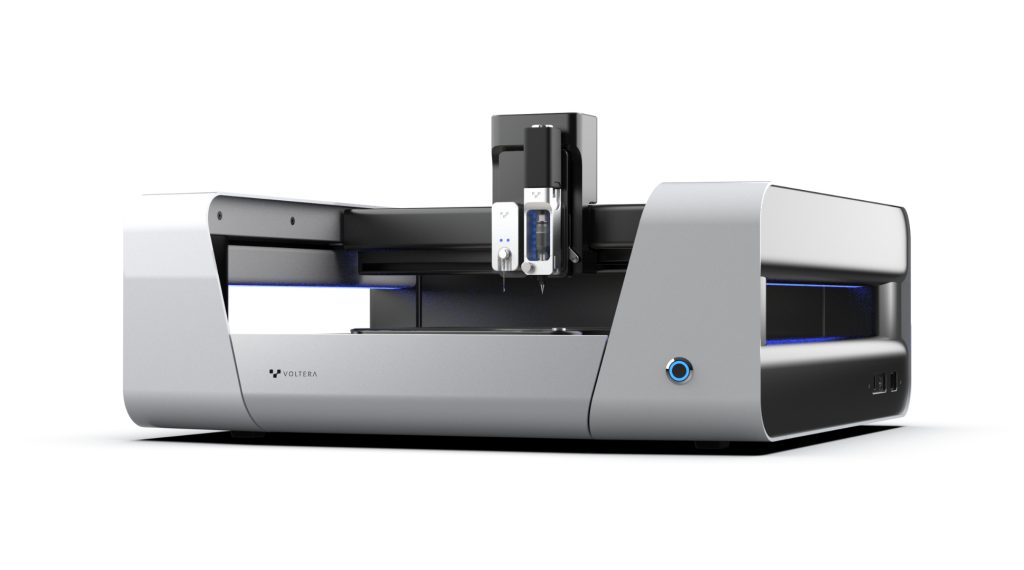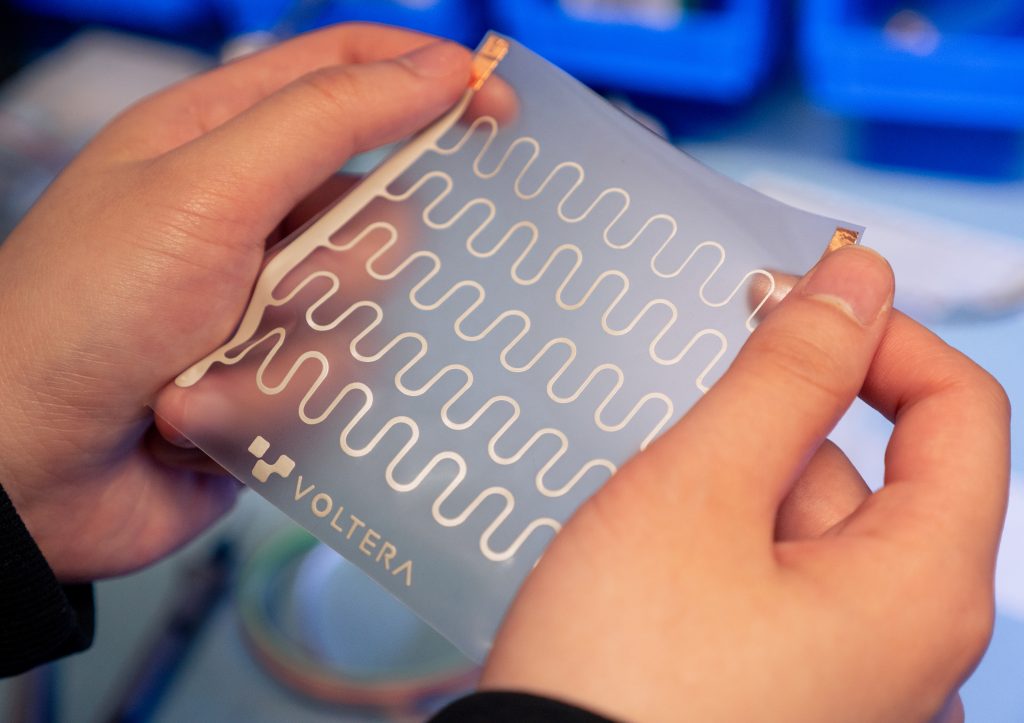Time is running out! Nominate now for the 3D Printing Industry Awards 2023.
The NOVA, from Ontario-based electronics 3D printer manufacturer Voltera, became the world’s first 3D printer for soft, stretchable electronics when it was launched last year.
Employing direct ink write (DIW) technology, the NOVA can 3D print electronic circuits on soft, stretchable, and conformable surfaces.
Voltera claims that the 3D printer’s precision extrusion technology makes it easier and faster to conduct electronics research and “develop the products of the future” by enabling rapid benchtop iterations. This is said to lower production costs, accelerate development times, and produce more reliable results.
“This first-of-its-kind benchtop machine unlocks rapid flexible hybrid electronics prototyping and the ability to experiment with custom inks and a wide variety of substrates,” commented Alroy Almeida, CEO and co-founder of Voltera.
“NOVA is already being used to innovate how humankind explores deep space, to develop printed, on-skin sensors for medical imaging, and to prototype clothing that can measure your heart rate yet can go through the gentle cycle in your washing machine.”
“With NOVA, we can make devices and align them to sub-10-micron precision, which is essential to everything that we do,” added Alex Kashkin, Graduate Researcher, Velasquez Group at MIT. Kashkin is using NOVA to develop 3D printed electron sources for neutralizing ionic thruster plumes in low-earth orbit.
“If we have a 20-micron deviation, our devices explode. We need a lot of precision, we need to have tuned materials, and NOVA enables both.”

Key features of the NOVA
According to James Pickard, Product Director at Voltera, the NOVA was created to alleviate the pain points associated with prototyping flexible hybrid electronics (FHE).
Pickard has highlighted that traditional electrical devices are developed with the standard manufacturing processes and materials used for printed circuit boards (PCBs). This etching process uses hazardous chemicals, and is optimized for materials such as FR4 or Kapton with copper to connect silicone components.
However, according to Pickard, traditional electrical manufacturing is limited to few material options, with limits in form and functionality. This has led to growing demand for FHEs that are “soft, stretchable, large scale, and integrated.”
To meet this demand, the NOVA offers wide-ranging materials compatibility. The NOVA has been optimized for screen printable inks, allowing for easier scaling from a lab environment to production. The NOVA also offers a semi-automated calibration procedure, allowing users to fill the 3D printer Smart Dispenser cartridge with the desired material and start 3D printing in minutes.
The NOVA allows these materials to be 3D printed onto a number of substrates. Rigid substrates such as glass, PCBs, and ceramics are all compatible with the NOVA, as well as flexible polyimides and PETs, stretchable TPUs, and porous substrates such as paper.
The NOVA’s quick-swap work area allows these substrates to be easily positioned and ready for 3D printing. Flexible substrates can be mounted using the NOVA’s Vacuum Table module, whilst custom fixturing can be employed when mounting rigid substrates. A threaded mounting grid is also available and can be customized and tailored to suit user needs.
Screen printable materials come in a wide range of viscosities, and can possess numerous rheological properties. These properties can also be influenced by temperature, which can pose challenges with micro-dispensing.
To alleviate these challenges, the NOVA incorporates a closed-loop pressure sensing system, with a heater also being integrated into the 3D printer’s Smart Dispenser. This is said to allow for a greater level of consistency and control throughout the 3D printing process. Users can also create and save dispensing profiles, making it easier to 3D print with a wide range of materials.
The NOVA can also 3D print at resolutions as low as 17µm/pixel. This capability is attributed to the NOVA’s downward-facing vision system, which allows for precise alignment/registration with an AR overlay. This is said to enable high-end inspection, alignment, and measurement capabilities.
“I think where this sort of technology, NOVA, will shine is in applications that were not possible before. You shouldn’t fight or try to compete with silicon chips or PCBs. You should try to make something that’s impossible with those technologies,” stated Gerd Grau, Director of the Electronics Additive Manufacturing Lab at York University. Grau is using the NOVA to develop on-skin biomedical tattoo electrodes.

Technical specifications and pricing
Prospective customers can contact Voltera’s sales team for pricing information.
| Dispensing technology | Direct ink write (DIW) |
| Dimensions | 675 mm x 605 mm x 345 mm |
| Pressure control | Closed loop |
| Material temperature control | Up to 40℃ |
| 3D print area | 220 mm x 300 mm |
| XYZ resolution | 2.5 µm x 7 µm x 1.25 µm |
| Substrate thickness | Up to 30 mm2 |
| Substrates | Rigid: PCBs, glass, ceramic, etc. Flexible: Polyimide, PET, etc. Stretchable: TPU, etc. Porous: Paper |
| Syringe capacity | Up to 2.5 mL |
| Dispensable materials | Include: Solder paste, Conductor 3, Screen printable materials |
| Interface | Web application |
| File formats | Gerber |
| Connectivity | 1x USB-A 2.0, 1x USB-A 3.0, Ethernet, WiFi |
Subscribe to the 3D Printing Industry newsletter to keep up to date with the latest 3D printing news. You can also follow us on Twitter, like our Facebook page, and subscribe to the 3D Printing Industry Youtube channel to access more exclusive content.
Are you interested in working in the additive manufacturing industry? Visit 3D Printing Jobs to view a selection of available roles and kickstart your career.


